
Kiesel Guitars Rereleases the DC127
Kiesel Guitars has rereleased one of the most iconic models in the company’s line of custom-built instruments: the DC127 now rejoins the lineup of Kiesel’s premium US-made instruments for a limited time.Designed to excel in a variety of musical styles, the versatile DC127 is available in a 6-string configuration. Key features include:
Body tonewood options include Alder, Swamp Ash, Roasted Swamp Ash, Mahogany, Walnut, Black Limba25” scale length, 24 stainless steel fretsFretboard material options include Ziricote, Ebony, Royal Ebony, Richlite Black Diamond, Richlite Maple Valley, Zebrawood, Rosewood, Birdseye Maple, Flamed Maple, Maple, Roasted Birdseye Maple, Roasted Flamed Maple, Roasted Maple, and Palemoon EbonyElectronics: Comes standard with either one or two Kiesel M22 pickups; various control layouts available, including a special option featuring 2 volume and 2 tone knobs with coil split and phase switchesBridge options include Hipshot fixed bridge, Hipshot tremolo, Floyd Rose tremolo with locking tunersLike other Kiesel models, the reissued DC127 is available in a wide range of options for unique customization. Players can select their favorite finish, tonewoods, electronics and hardware to create the guitar of their dreams…expertly crafted in Kiesel’s Southern California custom shop.
Kiesel’s DC127 is available for street pricing starting at $1,799. For more information visit kieselguitars.com.
KILL SCREEN 068: Mike McKenzie and Greg Weeks of THE RED CHORD Are Our People
One of our earliest player characters returns with a friend to talk about ditching class to play Atari, terrible games and amazing OSTs.
The post KILL SCREEN 068: Mike McKenzie and Greg Weeks of THE RED CHORD Are Our People appeared first on Decibel Magazine.
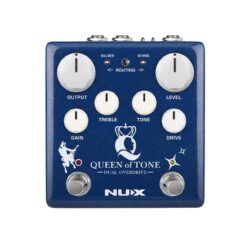
NUX Queen of Tone Review
NUX’s Queen of Tone dual overdrive pedal is, at least in name, a clear nod to Analogman’s iconic King of Tone—which is, in a very general sense, a highly modified mash up of two Marshall Bluesbreaker circuits. However the Queen of Tone deviates from Analogman’s approach to the dual-overdrive concept in a significant way: The pedal retains some Bluesbreaker lineage in the form of NUX’s own Morning Star overdrive, a Bluesbreaker-style pedal that makes up one half of the QOT. But the other half of the two-overdrive set up is the Horseman, NUX’s version of the Klon Centaur.The Morning Star side boasts controls for drive, tone, and level, while the Horseman’s control set consists of gain, treble, and output knobs. A routing switch enables you to switch the order of effects, and a toggle on the crown of the pedal selects true or buffered bypass. A second adjacent mini-toggle engages an input FET Stage that adds even more gain. There are also two hidden features of sorts: Holding down the Morning Star footswitch engages Shine mode, which adds treble boost and clarity. Pressing and holding the Horseman side, meanwhile, activates Silver mode, which extends the gain range of the Horseman circuit. (“Silver” refers to the silver Klon Centaur, which is typically considered treblier and sometimes raspier than the gold iteration).The two circuits complement each other well and stack seamlessly.
One peculiar aspect of the Queen of Tone switching that’s worth noting: The pedal activates with the release of the footswitch, which enables the press-and-hold function for the Silver and Shine modes. Some players will perceive this as a lag, but if you can adjust your timing without upsetting your rhythm and flow, it’s merely a minor annoyance.Gain On the RangeI tested the Queen of Tone with a Fender Telecaster and Gibson ES-355, alongside a tweed Deluxe-style 1×12″ combo, and the pedal proved easy to use, extremely versatile, and adaptable to either guitar/amp combination. From the Morning Star’s juicy, dynamic, tube-like clipping to the Horseman’s clear, transparent, and slightly mid-forward response, there are a ton of tones to tap into, and the vast majority of the sounds are not only useful, but loveable. What’s more, the two circuits complement each other well and stack seamlessly, offering a unique gain structure depending on the signal order.NUX addressed a common issue with Bluesbreaker-style circuits, which often require maxing the level control for adequate output. Here, there’s more headroom to work with, which, along with the extra high-end shimmer from the Shine mode, contributes to a very present tone. There’s plenty of cut and brightness available from the Horseman side, too. For my taste, the Silver mode pushed things a little too bright, but it’s useful when you need leads to soar. Engaging the FET switch also produces a notable increase in gain to either side. But as you might guess, with all the extra brightness and gain already built into the extra circuits, it can be overkill unless you really want to hammer your amp’s front end.It could be argued that neither of these circuits is quite as lush or transparent as some boutique counterparts. But even discounting the cost savings, which are considerable, both the Horseman and Morning Star hold up very well on the tone front. Brought together in the Queen of Tone, they open up a huge expanse of gain-shaping possibilities.
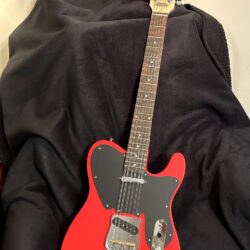
A Telecaster Enthusiast Adds Six Strings and Doubles the Jangle
Reader: Mark ShadleHometown: Atlanta, GeorgiaGuitar: dodeka I’ve been a Telecaster guy from my very first electric guitar purchase, and I’ve since had many in addition to numerous T-style versions that I built myself. I do like variations on the original theme such as the Thinlines and models with humbuckers, but my heart lies mostly with the single-coil models. My second and current obsession is 12-string guitars which I got into around a year ago. And because I’ve practiced and played 12-strings almost exclusively since, I’ve had a difficult time enjoying playing 6-strings again. This led me to build what I consider the ultimate T-style guitar. I have seen a few 12-string Telecaster models before—the most recent being a Japanese Fender Flagship Store exclusive. But it was never imported to the United States, and while they are still available today, they exist in limited numbers on the used market, most appear to be in Japan, and they are expensive.The body on dodeka is alder which is painted with a fiesta-red matte-nitro finish. The neck is maple with a rosewood fretboard and Gotoh machine heads. Taking inspiration from a Fender 1951 Precision Bass, the custom pickguard is single-ply Bakelite. Pickups are Fender American Vintage ’62 Custom single-coils with alnico 3 magnets in the neck and alnico 2’s in the bridge. The bridge is solid brass, which was CNC’d in a custom shape that mirrors a Telecaster’s lines. It also has grooved brass compensated saddles, which help keep all those strings aligned. Lower-octave strings are routed through the body and the high-octave and unison strings are top-loaded through the bridge. Intonation is surprisingly very good and close to spot-on with all strings.I stuck to a traditional setup when it came to the electronics and control harness, utilizing a configuration with a 3-way switch, a .047 uF orange drop cap, and CTS 250k pots. I also added a .001 cap and 100k resistor to the volume control for more treble bleed when you reduce guitar volume. It’s all wired with vintage push-back wire and finished with a Switchcraft jack mounted in an Electrosocket plate. The name dodeka, by the way, comes from the ancient Greek word for 12, and I read somewhere that the word’s origins are rooted in a manner of saying “6 + 6,” which made it even more fitting.When I first played the guitar, I was so pleased that it sounded so resonant—almost as if it had a hollow cavity in the body, which it most certainly does not. I often sit and play it without plugging it in as I enjoy the acoustic aspect of its sound. The sustain is fantastic and the guitar stays in tune nicely. It sounds extraordinary when plugged into my Vox AC30 with some added light compression and chorus, and can be very chimey, with a sound similar to a Rickenbacker 12. I am very pleased with the finished product and really glad that I pursued my 12-string Telecaster dream!
Read more »Track Premiere: Heads for the Dead Channel Cronenberg and Necrophagia on “To The Very Last”
Heads for the Dead—helmed by Jonny Pettersson (Wombbath) and Ralf Hauber (Revel in Flesh, ROTPIT)—have emerged from the fog with their fourth full-length, Never Ending Night of Terror. Get a taste now.
The post Track Premiere: Heads for the Dead Channel Cronenberg and Necrophagia on “To The Very Last” appeared first on Decibel Magazine.
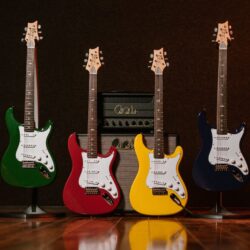
PRS Guitars Announces Four Fresh Colors for the SE Silver Sky
PRS Guitars today released the SE Silver Sky Rosewood in four new colors, created in collaboration with Grammy award-winning PRS Signature Artist, John Mayer. The fresh finishes, offered for the first time on any PRS model, are Derby Red, Trad Blue, Laurel Green, and Dandy Lion (a brilliant and eye-catching yellow).“The new Silver Sky SE lineup features four new colors inspired by traditional American fashion. These are time-tested hues that have been popular through decades, and I’m excited to share them with the world as the latest SE colorways,” said John Mayer.The SE Silver Sky is a familiar iteration of the original Silver Sky model that was first introduced with John Mayer in 2018. The SE starts with a poplar body, bolt-on maple neck, and rosewood fretboard with PRS trademark bird inlays. The 22-fret, 25.5” scale length neck features the original 635JM carve and an 8.5” fretboard radius. It is anchored by three single-coil 635JM “S” pickups, a two-point steel tremolo, synthetic bone nut, and vintage-style tuners.The SE Silver Sky Maple colorway is also being updated to include two new finishes previously offered on the rosewood-equipped model. The SE Silver Sky Maple’s new color palette is Moon White, Stone Blue, Summit Purple, and Nylon Blue.PRS Guitars continues its schedule of launching new products each month in 2025. Stay tuned to see new gear and 40th Anniversary limited-edition guitars throughout the year. For all of the latest news, click www.prsguitars.com/40 and follow @prsguitars on Instagram, Tik Tok, Facebook, X, and YouTube.
Read more »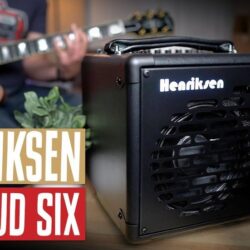
The Bud SIX: One Amp, Every Gig? | PG Plays
PG contributor Tom Butwin explores the Henriksen Bud SIX, a compact 9″×9″ amplifier that delivers 120 watts of clean, full-range sound. Weighing just 13 pounds, this U.S.-built amp is designed for working musicians who need reliable tone, real power, and maximum flexibility in a small footprint. Each of its two channels features XLR and ¼″ combo inputs, phantom power, a five-band EQ, reverb, and presence control. Independent effects loops allow for detailed signal routing whether you’re playing acoustic or electric, singing, or using backing tracks through wireless or aux input. The Bud SIX also includes a post-EQ and post-reverb XLR line out, a headphone jack for silent monitoring, an extension speaker output, and a tweeter defeat switch. It comes with a tilt-back wedge and a padded gig bag to make setup and transport easy. Whether you’re a jazz guitarist, a solo performer, or running a pedalboard-heavy rig, the Henriksen Bud SIX is a powerful and clear solution that adapts to almost any stage or studio environment. Learn more and find your new “Bud”: https://henriksenampfliers.comThe Bud SIXDo you want to have an amplifier the size of a toaster that gives you the quality of tone for BOTH electric and acoustic instruments that you’d expect from a studio situation with enough volume to cover almost any gig? Of course you do. That’s why if you play guitar, or any stringed instrument with a pickup for that matter, you need a Bud. The Bud has every feature you need and more than enough volume to get your bandmates or club manager to ask you to turn down, and coupled with the extension cabinet you can keep up with the heaviest-handed drummer with no problem. The amp and cabinet are naturally feedback resistant which limits the need for artificial notch filtering and other suppression technologies that negatively effect your tone.But it’s not all about size and volume, there are lots of tiny, loud amplifiers on the market. You’ve tried them. You know what they sound like. The Bud is different. Henriksen Amplifiers is all about tone first, the incredibly portable size and feature set of The Bud were developed around the sound, not the other way around and you can definitely hear the difference. Our pre-amp, from input to output, is designed using the highest grade audio components. We offer a 5-band EQ with carefully chosen center frequencies which were fine-tuned by ear to meet the demands of different playing environments using the widest possible array of musical instruments. We give you two identical pre-amps, each with independent EQ and reverb and actual 48 volt phantom power, and an auxiliary input on each channel so that whatever you are using it for can be EQ’d separately from your instrument signal.
Read more »Video Premiere: Intercourse – ‘Another Song About the Sun’
The Red Chord’s Greg Weeks stars in a new video from Connecticut noise rockers Intercourse.
The post Video Premiere: Intercourse – ‘Another Song About the Sun’ appeared first on Decibel Magazine.
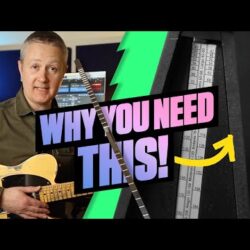
Why Every Guitarist Needs a Metronome – Practice the Right Way!
Using a metronome is a great way to improve your technique and timing – here are tips and tricks to get the most from the ticking device! For the full…
Read more »
Gibson Honors Sierra Hull with Signature Gibson Mandolin
Gibson continues to set the benchmark for craftsmanship, quality, innovation, and sound excellence, honoring the trailblazing mandolin virtuoso Sierra Hull with her very first signature F-5 Master Model and F-5G mandolins.Gibson has shaped the sound of music since 1894, when Orville Gibson first designed and built mandolins in his workshop. 130 years on, the groundbreaking and forward-thinking carved top design that revolutionized the mandolin and guitar world, delivering a louder, more durable, more playable instrument, remains the DNA of every Gibson.To honor this journey, Gibson is proud to celebrate the groundbreaking two-time GRAMMY®-nominated mandolin virtuoso, singer, guitarist, and songwriter, Sierra Hull, who is now the first-ever female artist to have a signature Gibson mandolin. On October 7, Gibson will debut the Sierra Hull F-5 Master Model and the Sierra Hull F-5G mandolins worldwide. Both mandolins will arrive in a Sierra Burst VOS Varnish finish and come with unique case candy in a package worthy of this trailblazing artist who has taken the mandolin and bluegrass communities by storm.“We spent about two years talking and dreaming about what this mandolin would become,” says Hull. “The exciting thing for me is that the mandolin that I have played exclusively since 2009 was signed by Master Luthier David Harvey. It’s become my voice after so many years of playing it. Being able to work on this project with David personally gave me the confidence that we’d be able to achieve something unique, while still honoring the legacy and history of those beloved Master Model mandolins. It’s exciting and full circle to see these new mandolins with my name on them and his signature inside.“When I finally played the prototype for the first time, I knew these instruments would be something that I could be proud of. They are hand-built with the highest level of quality by the team at Gibson—many folks who have worked there for years. Mandolins can also be very expensive. They take a lot of time and care to build right. If I’m going to put my name on something with that kind of price tag, it needs to be a great instrument and something long-lasting. I truly believe these mandolins are, and I’m really proud of that.”“Sierra Hull is one of the most gifted mandolin players and singer-songwriters of our time,” says Mat Koehler, Vice President of Product at Gibson. “She has redefined what’s possible on the mandolin and across the many genres she explores. Her signature models reflect her passion for the instrument and her uncompromising approach to tone and feel. Each one is built with pride, authenticity, and soul at the Gibson Custom Shop, and we’re honored to have worked with Sierra to bring them to life.””Sierra’s music transcends traditional bluegrass – she strikes a beautiful balance between old-time sounds and contemporary Americana, pioneering and shaping the sound of modern acoustic music and inspiring a whole new generation of music lovers,” adds Codey Allen, Gibson Cultural Influence-North America. “Sierra has inspired all of us at Gibson, and it has been a joy to share the creative process with her. She has poured so much time, love, and attention into every detail of her signature mandolins, and we are grateful to share in this celebration of her art.”Explore the current Gibson mandolins HERE, as well as the Epiphone Bluegrass Collection HERE.Sierra Hull – “Lord, That’s A Long Way” “This was the first time I’ve gotten to see the process of building mandolins up close and personal, which has been such a beautiful and fun thing to witness,” continues Hull. “To see a mandolin go from simply a piece of wood to the final product of an amazing instrument is kind of mind-blowing. I’ve never been one to know a lot about the ins and outs of wood types, or real specs of instruments, but I am really connected to what I feel and hear from an instrument—even if I don’t always have the language to discuss it. I’ve learned, and continue to learn, a lot about this tiny instrument I love so much through this process. It’s been so fun.”Currently nominated for the International Bluegrass Music Association’s “Female Vocalist of the Year” and “Mandolin Player of the Year,” Sierra is also the only woman to have been nominated for, let alone win, six International Bluegrass Music Association (IBMA) “Mandolin Player of the Year” awards, Sierra Hull is world-renowned for her exceptional technical proficiency and genre-bending musical style. Sierra started playing mandolin at age eight, and by age 10, made her Grand Ole Opry debut. Her fusion of bluegrass, Americana, folk, jazz, and modern progressive acoustic music attracted the attention of other highly skilled bluegrass musicians, and she has collaborated with and received accolades from Eric Clapton, Dolly Parton, Brandi Carlile, Cory Wong, Billy Strings, Dave Matthews, Bill Kreutzmann, Sturgill, Simpson Gillian Welch, Béla Fleck, and Alison Krauss. Hailing from Byrdstown, Tennessee, Hull’s innovative sound is deeply rooted in bluegrass yet continually pushes boundaries.
Read more »